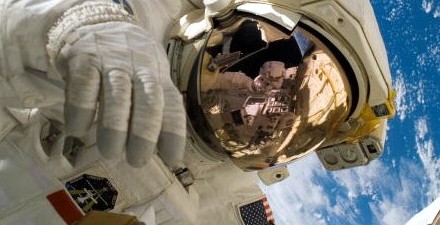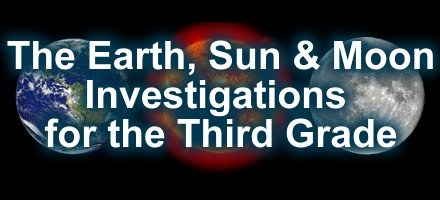
Lessons

Lessons Outline
The unit includes a set of interactive, hands-on Activities designed to build students' conceptual grasp of the material gradually. The unit is designed to be taught as an ongoing science project throughout the school year, so that students have time to ponder and absorb one concept before the next is introduced. The progression of abstraction and complexity is broken up into three blocks, described below.
Section 1 - Light and Shadows
We begin in The Sun Moves in the Sky by tracking the motion of the Sun in the sky over the course of a day. The first part of the unit is devoted to developing an understanding of the causes and implications of this cyclic motion; in this Activity, however, we make no attempt to go beyond a careful, detailed observation of the pattern itself. Since the Sun's path changes with seasons, reflecting the tilt of Earth's axis, we recommend that this Activity be repeated three times during the course of the year, in fall, winter, and spring. To understand how the daily cycle of light and darkness is driven by the Earth's rotation, a few fundamental properties of light must be clear to students, and the next two Activities - Light and Darkness in Space and Pinhole Viewers are designed to help students understand light as a form of energy that moves in straight lines. Building on this understanding, students next track the change in their shadows over the course of a day, paralleling their study of the Sun's path earlier, in Shadow Tracing. This reinforces and recalls the patterns established in the first Activity. It also sets up an important property of shadows. When we work with models, we will not be able to directly observe the world from the point of view of a model "person" living on our model "Earth." We will, however, be able to see the "person's" shadow.
Section 2 - The Spinning Earth
In this unit we begin to construct models that students can manipulate to understand the effects celestial motions have on our experiences on Earth. We first try this out with a plate serving to model the ground we stand on, and a vertical straw "person" modeling our "person" in As the Plate Tilts. Students will recreate the pattern of changes of their shadow over the course of a day by moving the plate in the presence of a fixed light source modeling the Sun. Reproducing the sequence of morning, noon, and evening shadows by rotating a plate models the effects of Earth's daily rotation. In the next two Activities, What's Up, Earth and Spinning into Darkness, Spinning into Light, students will use styrofoam model Earth to investigate how the insights from rotating plates transfer to a spherical planet. Students begin to understand the implications of living on a sphere by taking the perspective of an Earth person on their model Earth. Their new perspective taking helps the students know where is "up" and "down", what is off Earth when you look up, and how their location on the sphere dramatically effects what they observe in the day and night sky.
Section 3 - Orbits
Having rather thoroughly studied and explicated the daily cycle of light and darkness, the next two Activities, Your World is Tilted and Seasons and the Orbit investigate how the fact that the Earth's axis is tilted relative to its orbital plane causes the annual cycle of seasons in the two hemispheres. In the first of these, the effects of a tilted axis will be investigated and students will see that this causes the length of days and nights to vary with latitude, longer days in one hemisphere being related to longer nights in the other. In the second, Earth's orbital motion around the Sun, together with the fixed, tilted direction of the axis, will be seen to be the cause of seasonal variations.
The next three Activities, Phases of the Moon, Eclipses, and Dance of the Moon and Earth focus on the monthly cycle of Moon phases. Students first discover how looking from different angles at a round styrofoam "Moon" in the presence of the fixed "Sun" causes the illuminated part of the ball to change shape just as the Moon does. In Eclipses they will see how alignment of Sun, Moon, and Earth can lead to lunar and solar eclipses. Finally, in Dance of the Earth and Moon, they combine their understanding of the daily and monthly cycles to model both motions. At the end of this Activity they will realize how the Moon's phase is related to the times of day it is to be found in the sky. Sometime before launching into this material, it is recommended that students follow the Moon's shape and location in the sky over at least a month, as described in "Moon Cycle Calendars."
A final, summary activity, Dance of the Earth, Sun, and Moon invites students to combine all three motions in a complete model. At the end of this Activity, students will understand how it makes sense that the Earth's rotation about its axis in fact takes four minutes less than 24 hours.

